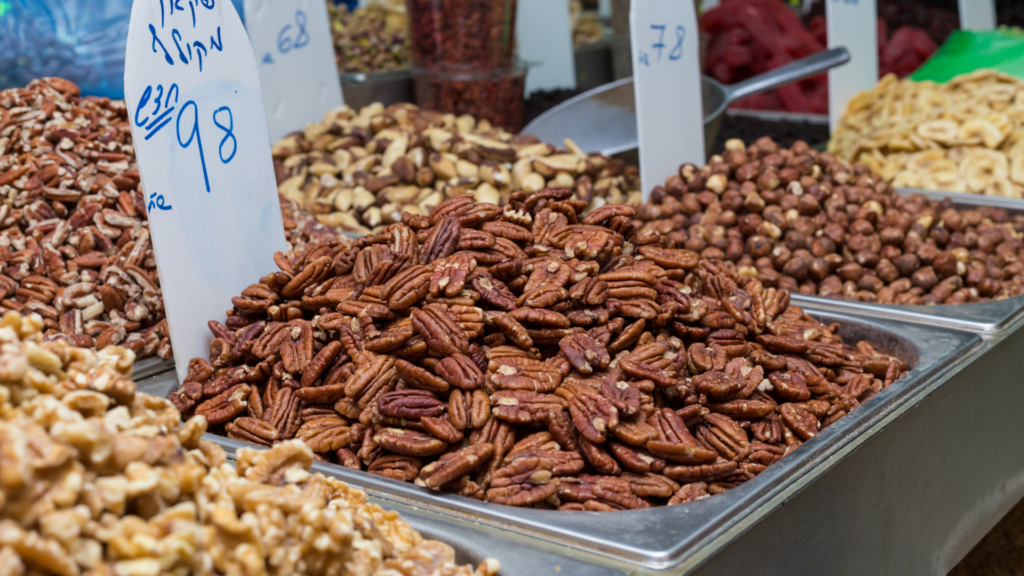Choosing the appropriate packaging solution for pecans is crucial for businesses aiming to meet their operational needs and customer expectations. The decision between bulk and retail packaging hinges on various factors, including target market, distribution channels, and storage requirements. This guide explores the distinctions between bulk and retail pecan packaging to assist you in making an informed choice.
Bulk Packaging
Definition: Bulk packaging involves large quantities of product packaged together, typically without individual wrapping for each unit. This method is commonly used for wholesale distribution, food service industries, and manufacturing sectors.
Common Forms:
• Flexible Intermediate Bulk Containers (FIBCs): Durable, large-capacity bags designed to store and transport substantial volumes of pecans.
• Plastic Bins or Totes: Rigid containers suitable for harvesting, storage, and shipping of pecans.
Advantages:
• Cost-Efficiency: Purchasing and handling pecans in bulk can reduce packaging and transportation costs.
• Ideal for High-Volume Users: Suited for businesses that require large quantities, such as bakeries, confectioneries, and restaurants.
• Reduced Packaging Waste: Minimizes the amount of packaging material used, aligning with sustainable practices.
Considerations:
• Storage Requirements: Adequate space and proper conditions are necessary to maintain product freshness and prevent spoilage.
• Shelf Life Management: Without individual packaging, monitoring and managing the shelf life of pecans becomes essential to ensure quality.


Retail Packaging
Definition: Retail packaging involves smaller, consumer-ready packages designed for direct sale to end-users. This format is prevalent in grocery stores, specialty shops, and online retail platforms.
Common Forms:
• Pre-Packaged Bags: Available in various sizes, such as 8 oz, 12 oz, 1 lb, and 2 lbs, often with branding and nutritional information.
• Resealable Pouches: Convenient for consumers, allowing for extended freshness after opening.
Advantages:
• Consumer Convenience: Ready-to-use packaging appeals to retail customers seeking ease of use.
• Portion Control: Smaller packages help consumers manage portions and reduce food waste.
• Brand Recognition: Customized packaging enhances brand visibility and can influence purchasing decisions.
Considerations:
• Higher Packaging Costs: Individual packaging materials and processes can increase overall costs.
• Environmental Impact: Increased use of packaging materials may raise environmental concerns; opting for recyclable or biodegradable options can mitigate this issue.
Making the Right Choice
When deciding between bulk and retail packaging for pecans, consider the following factors:
• Target Audience: Wholesale buyers and food service providers may prefer bulk packaging, while individual consumers typically opt for retail packaging.
• Distribution Channels: Determine whether your product will be sold in large quantities to businesses or in smaller units directly to consumers.
• Storage and Handling: Assess your capacity to store and manage inventory based on the packaging format.
• Branding Objectives: Retail packaging offers more opportunities for brand promotion and information dissemination.
By evaluating your business needs and customer preferences, you can select the packaging solution that aligns best with your operational goals and market strategy.




